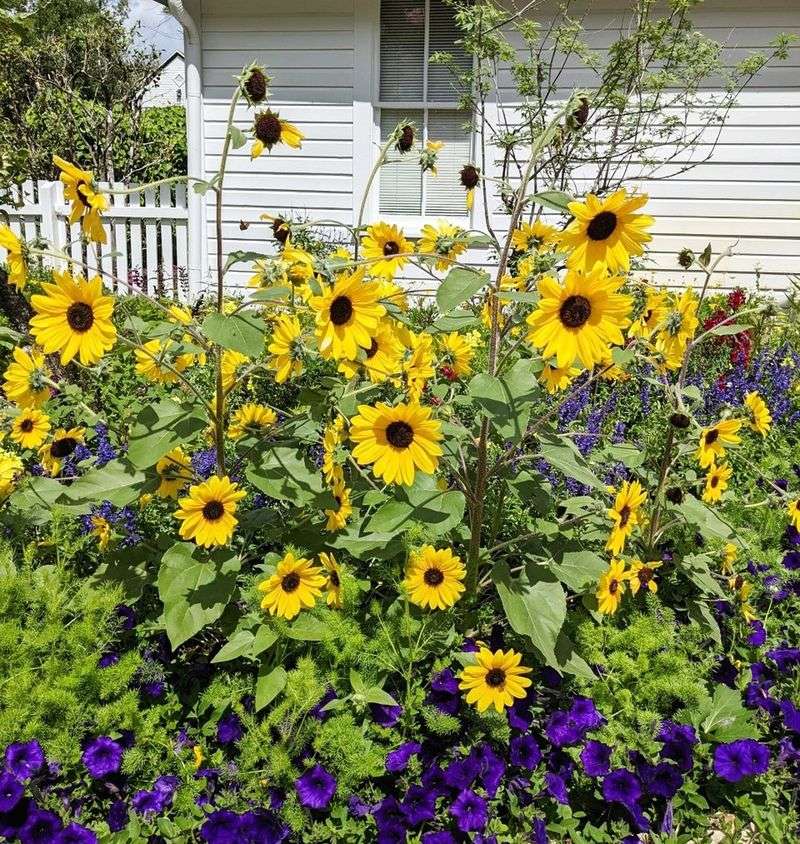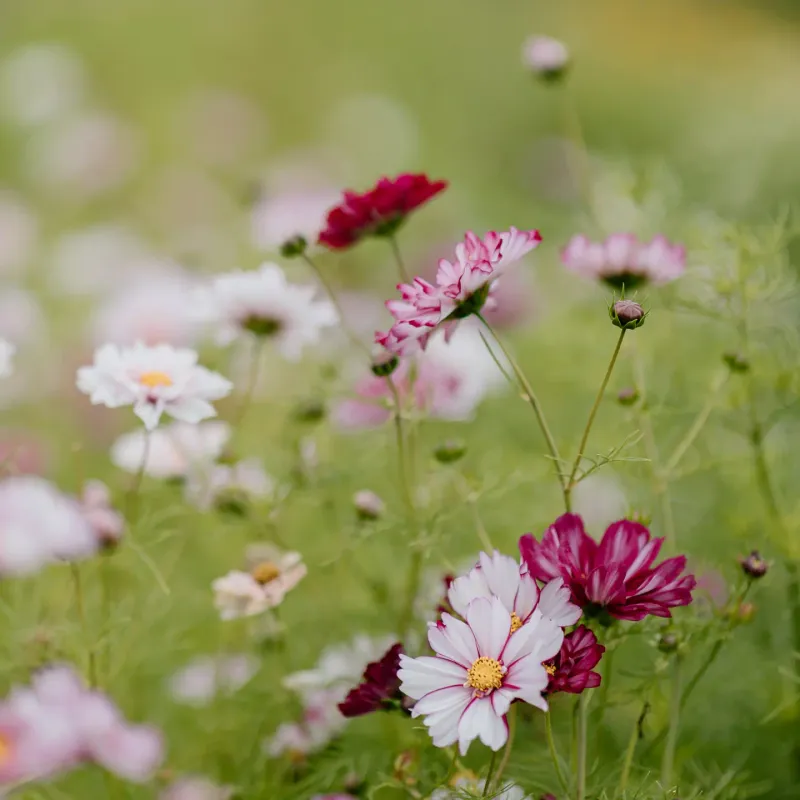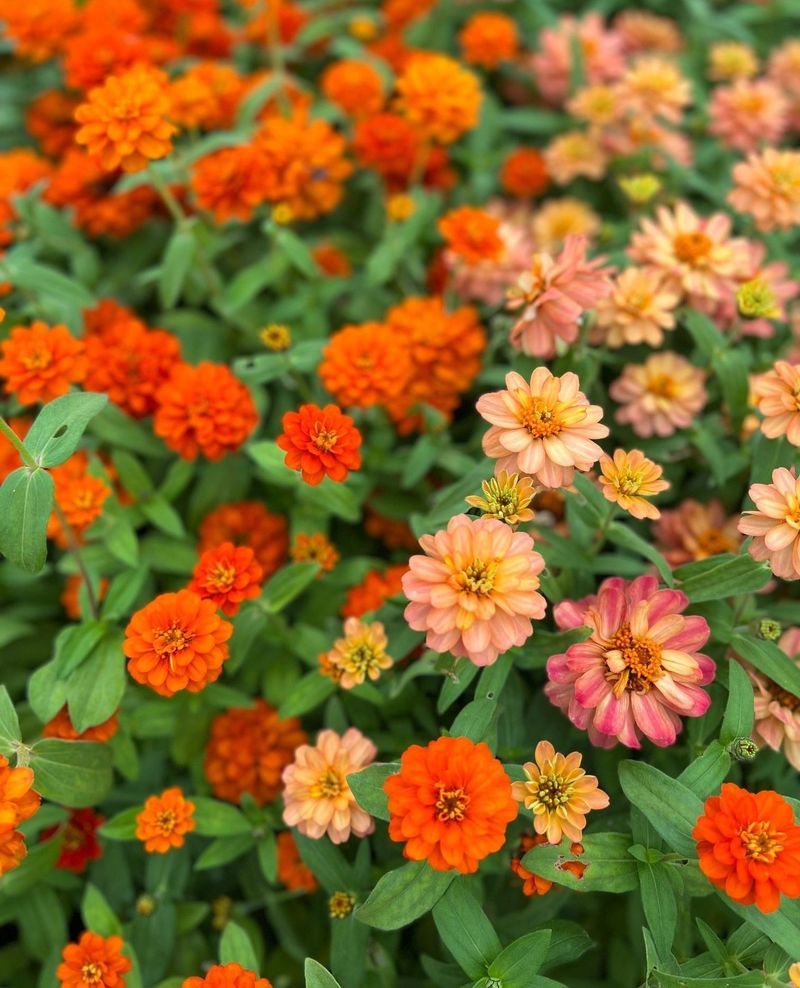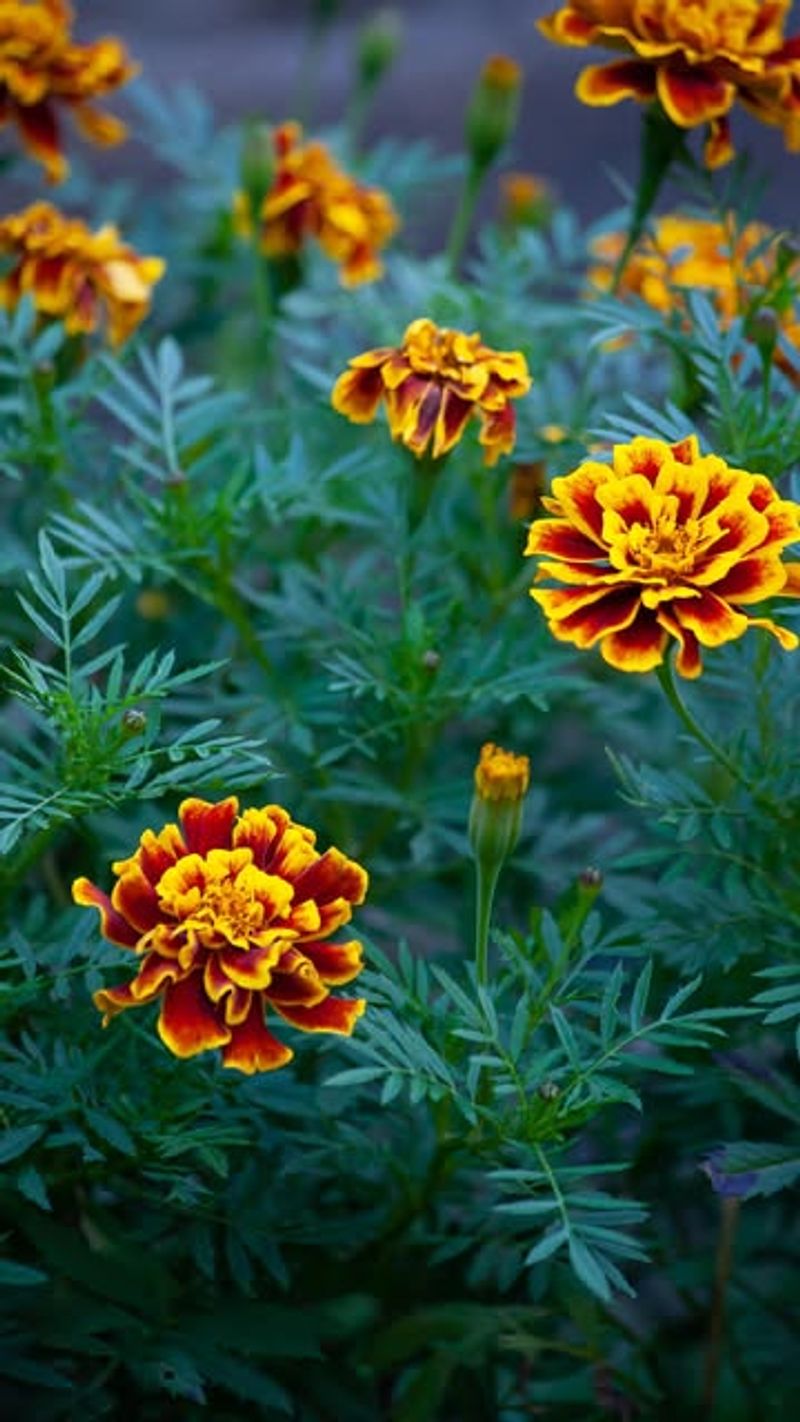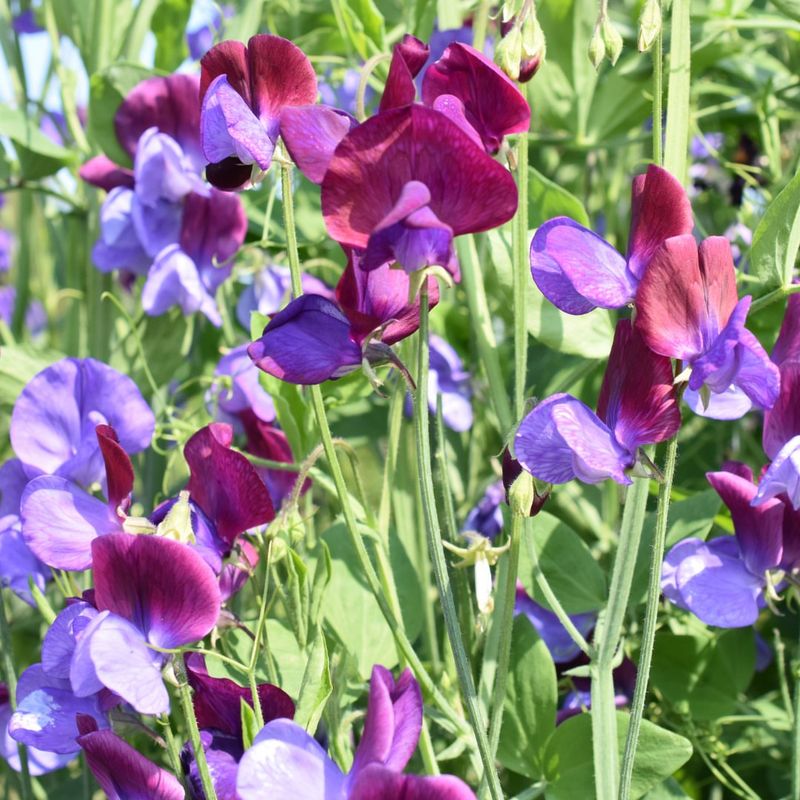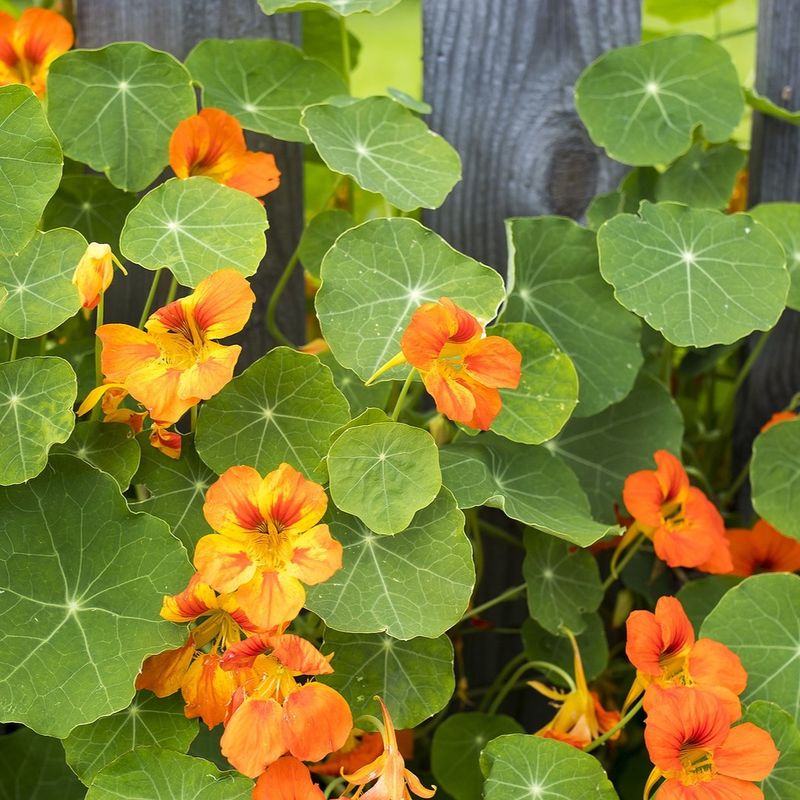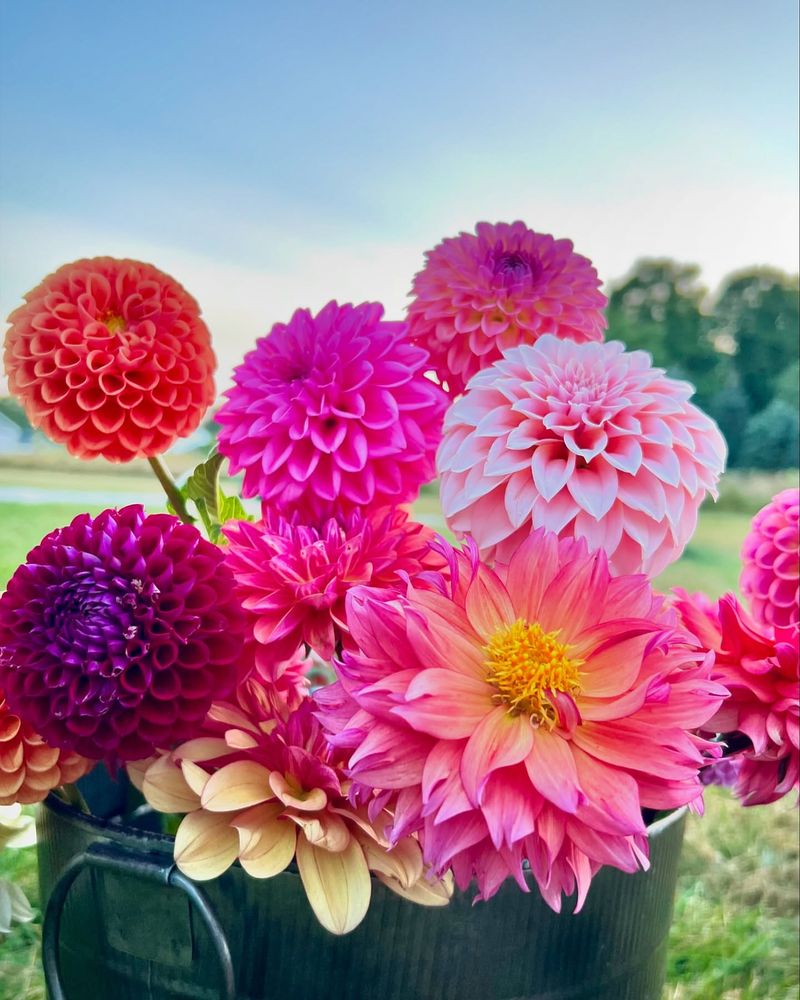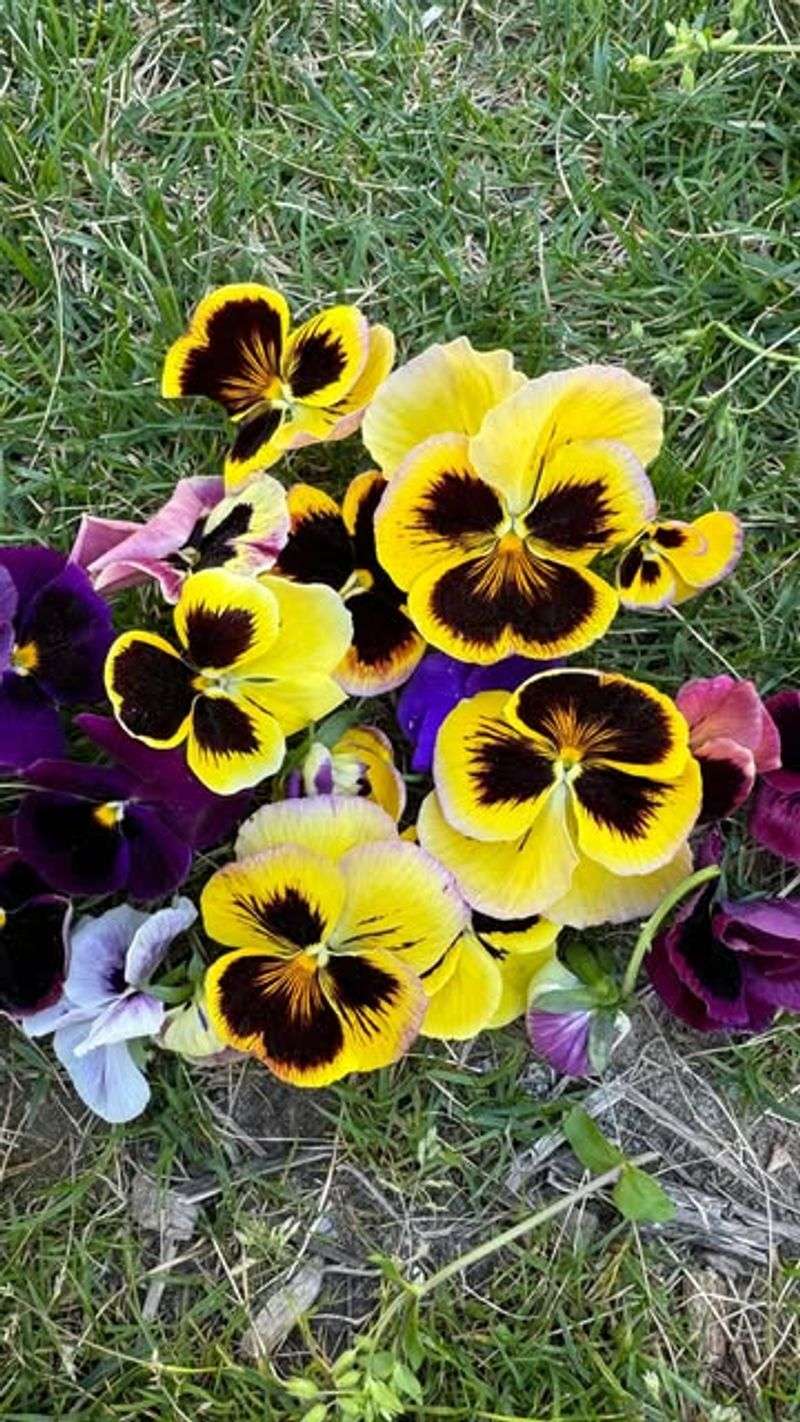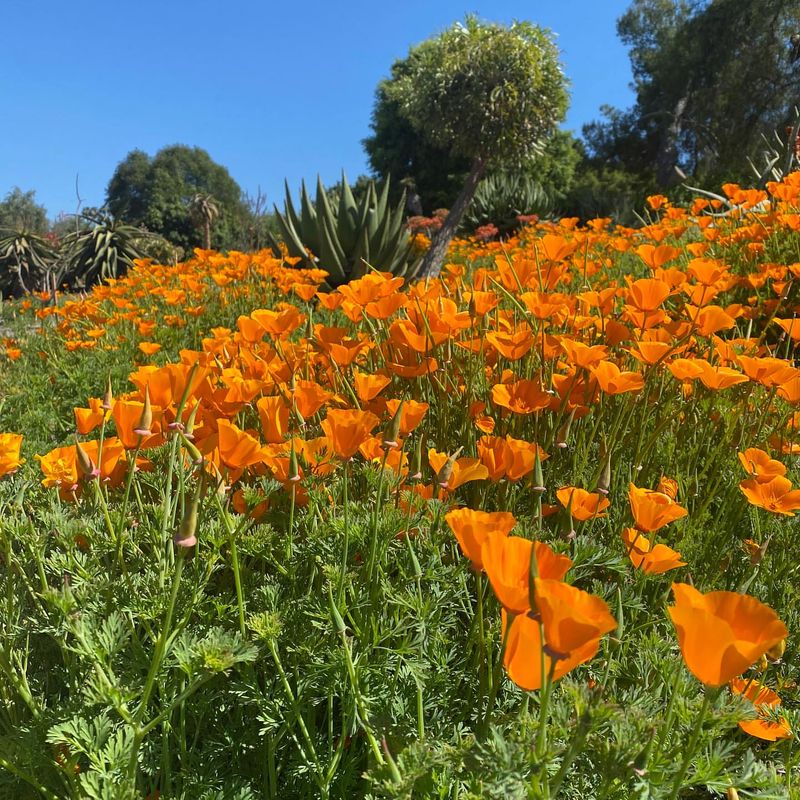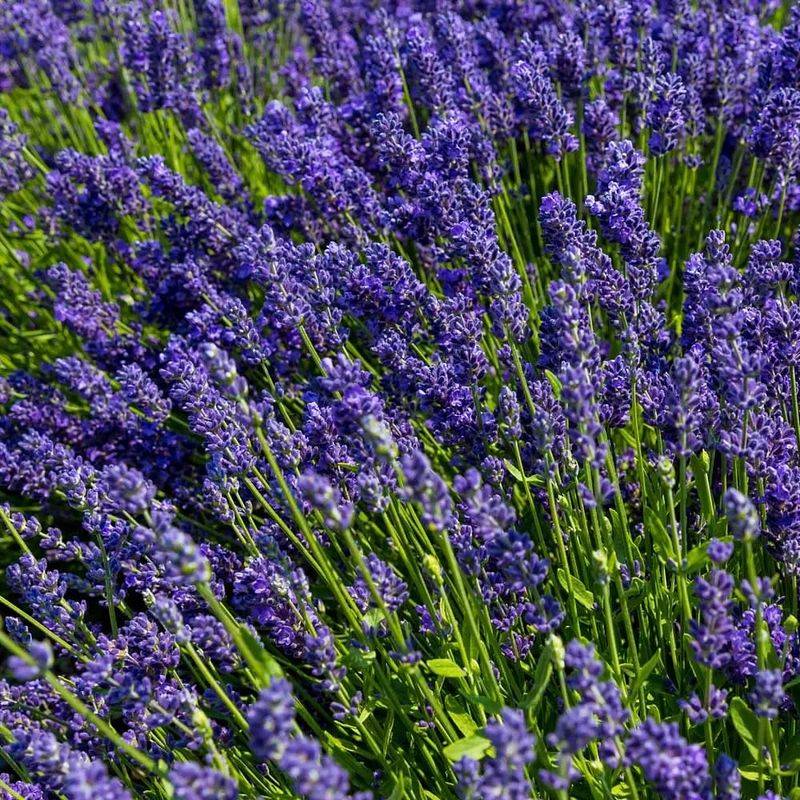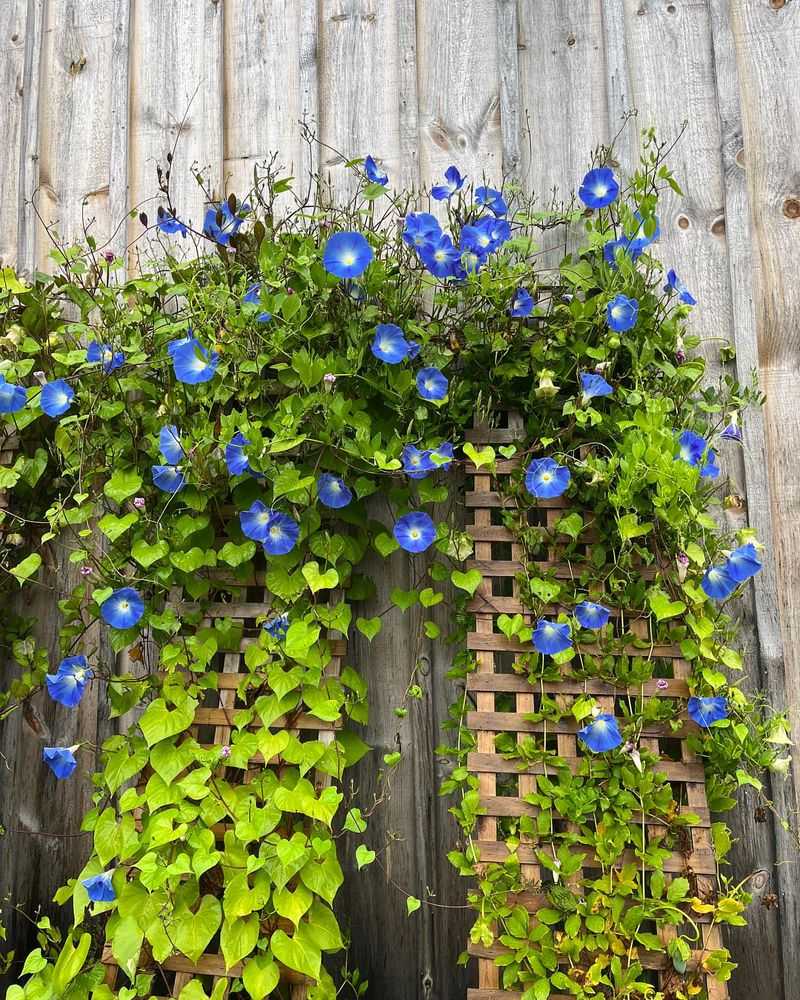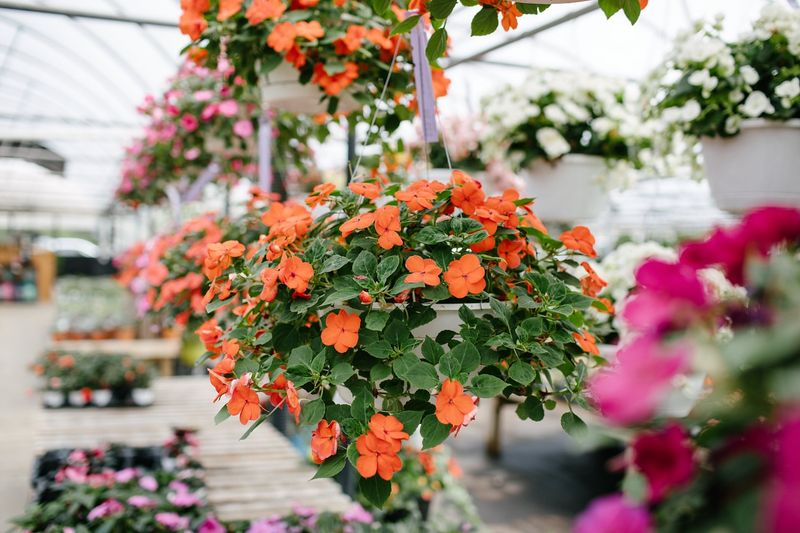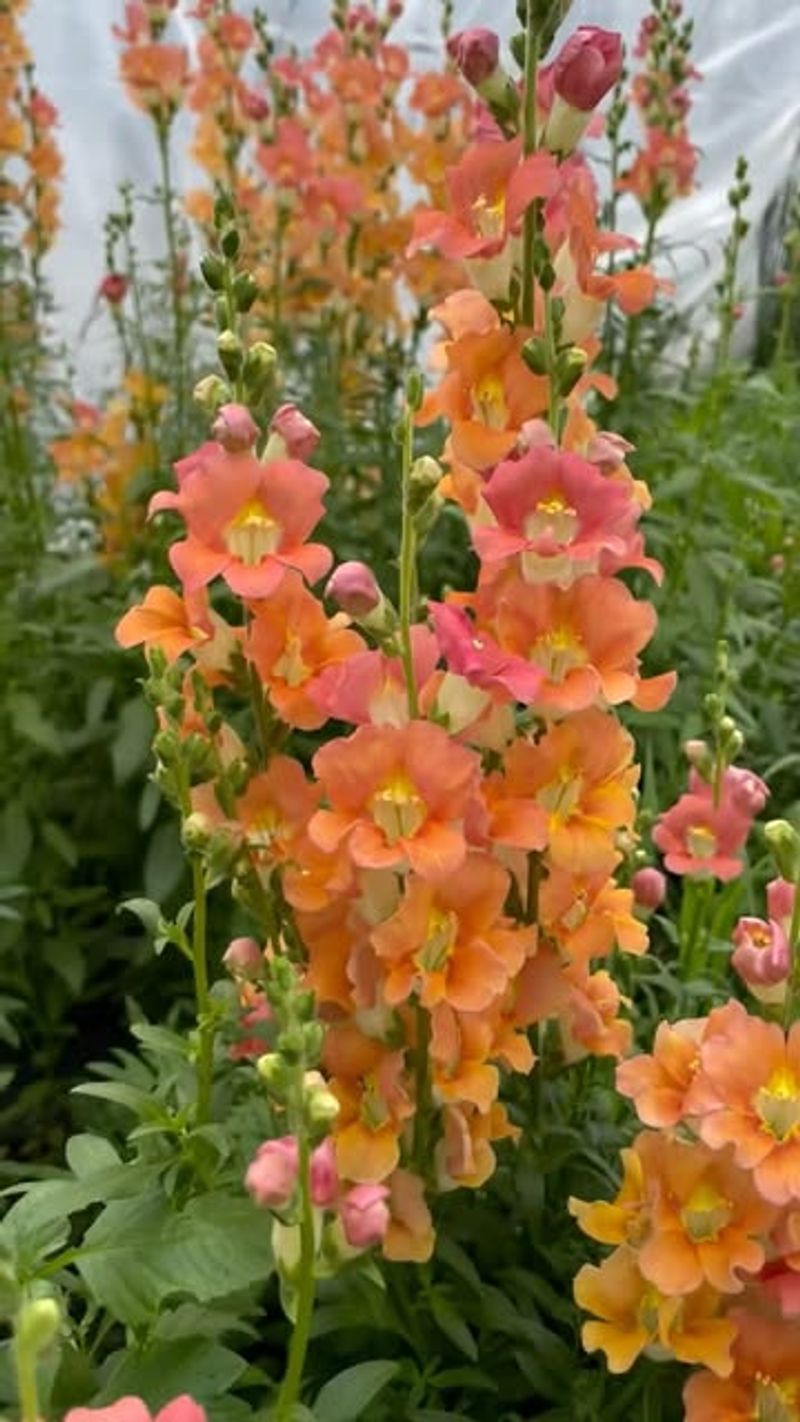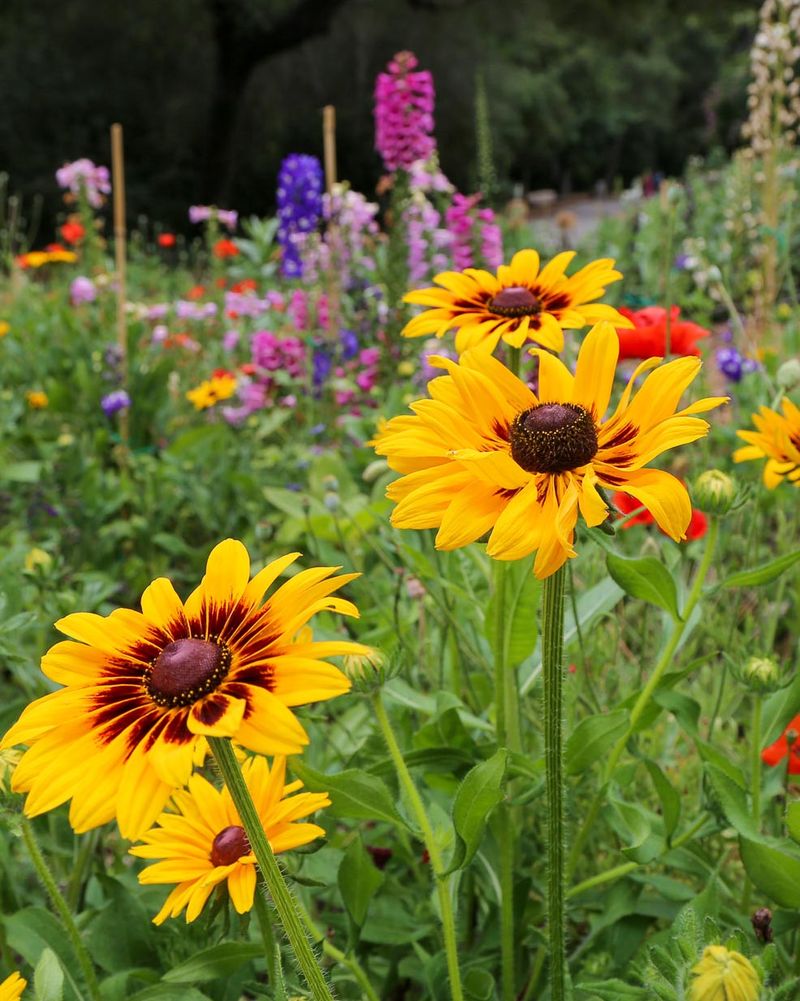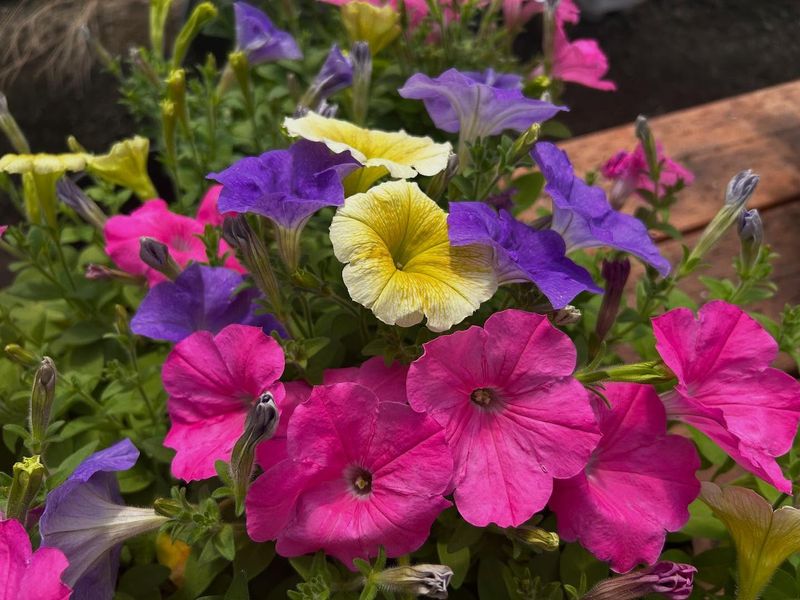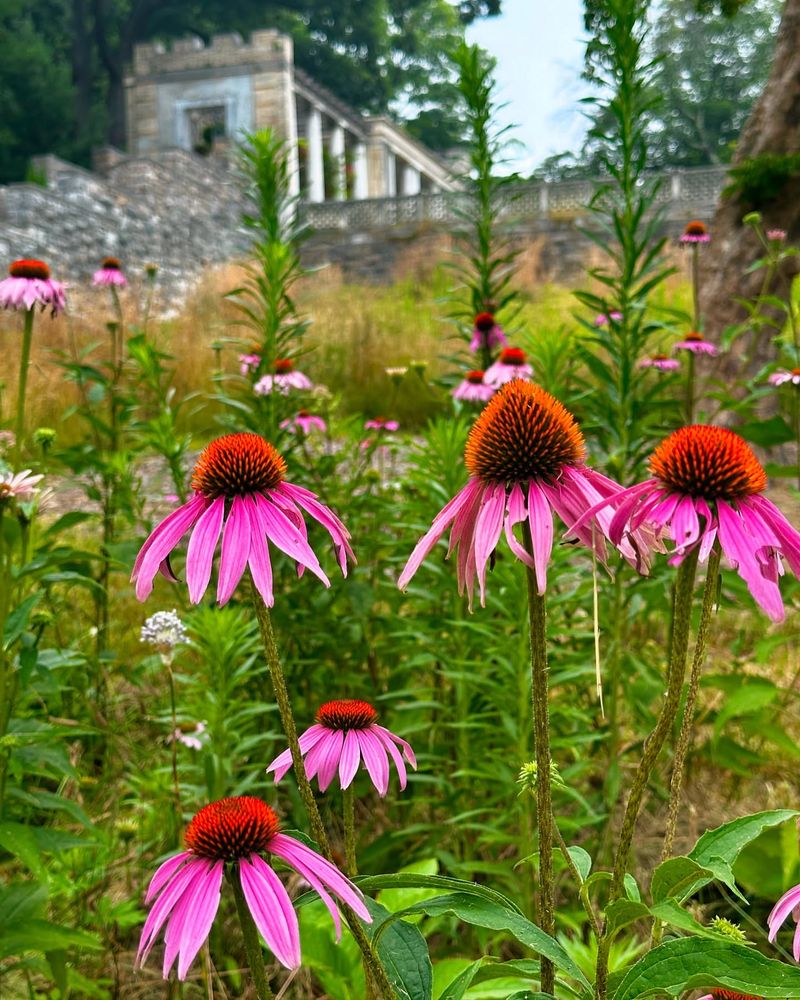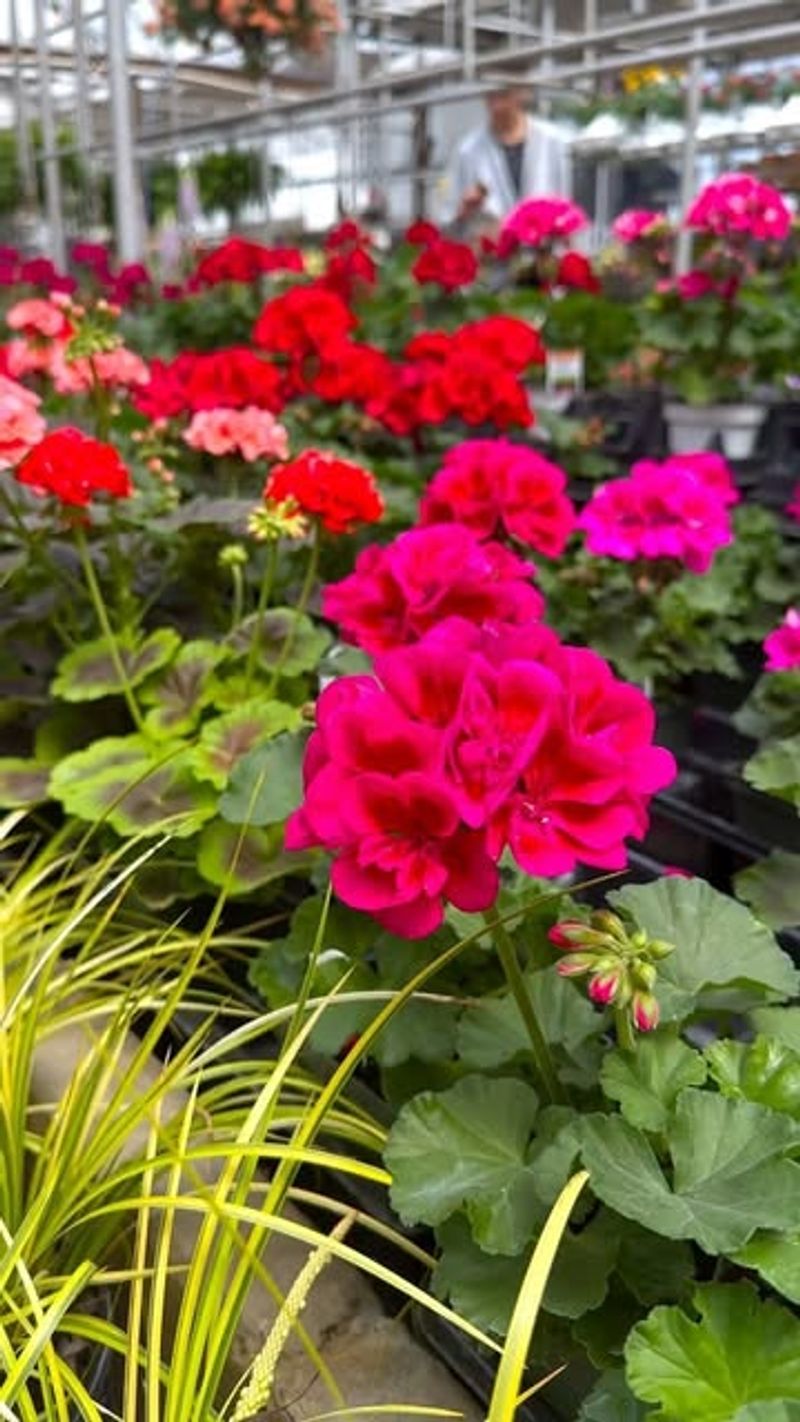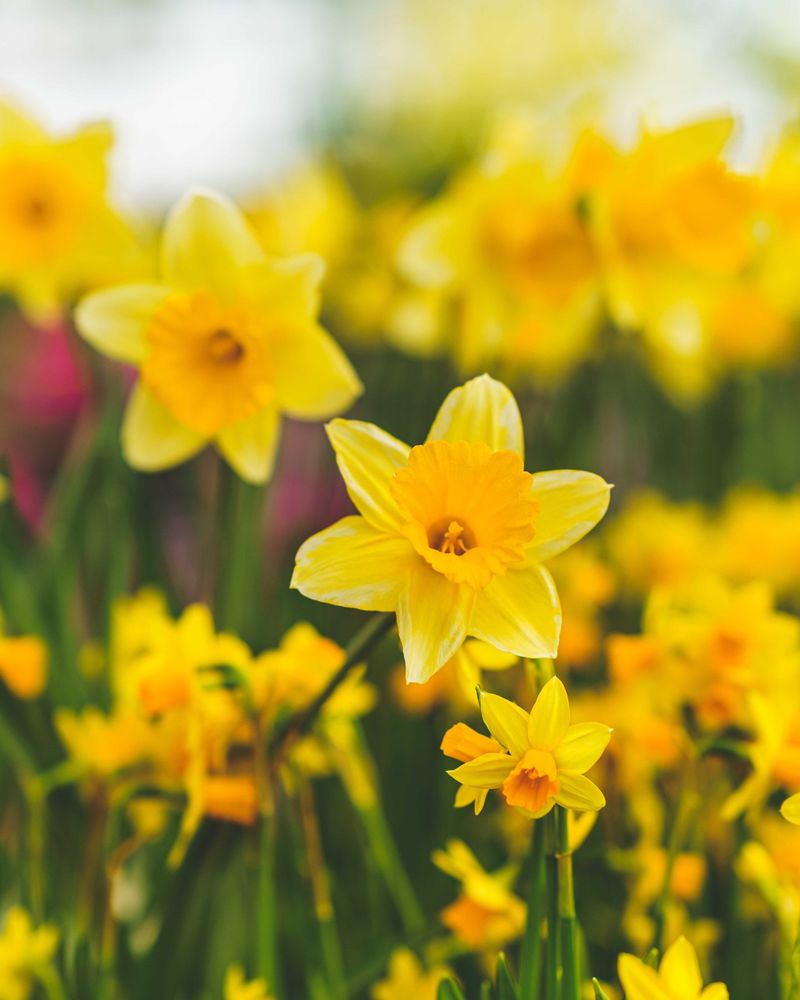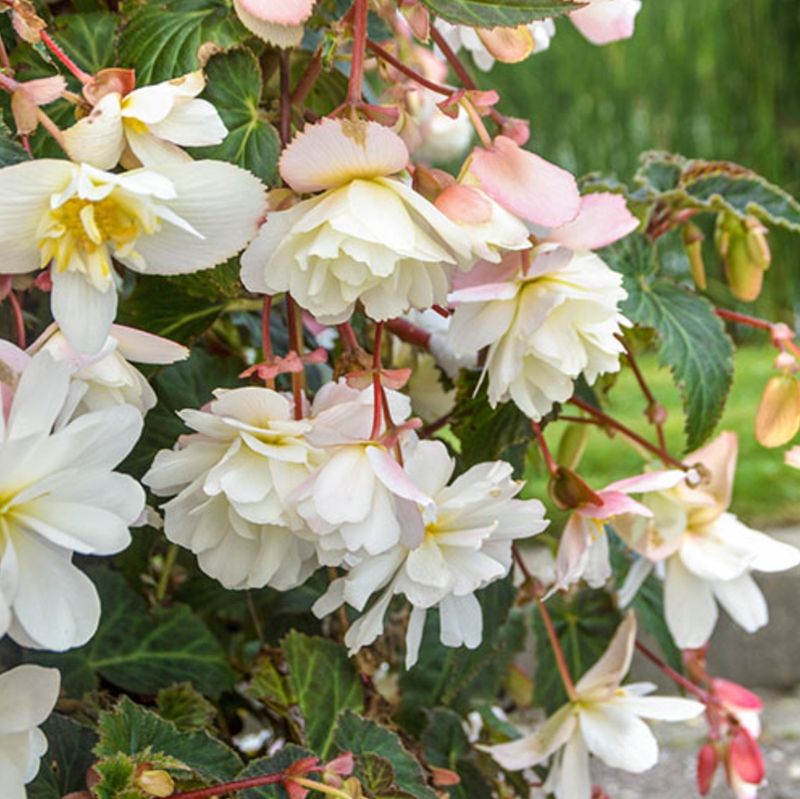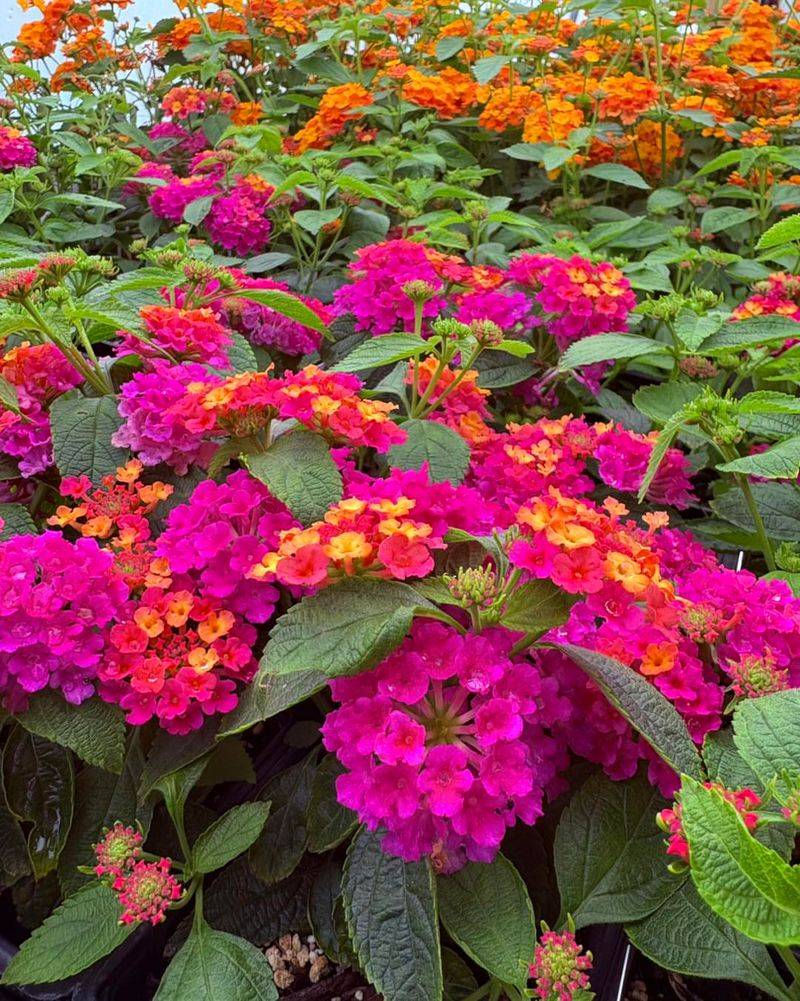You don’t need a green thumb to create a garden that turns heads. Plenty of gorgeous flowers are surprisingly easygoing, thriving with just a bit of basic care.
They’re perfect for beginners and seasoned growers alike. Think bold dahlias, cheerful coneflowers, and graceful cosmos—all stunning, all low-maintenance. These blooms bring charm without demanding constant attention or complicated techniques.
Whether you’re starting from scratch or refreshing tired beds, these plants deliver maximum wow factor with minimum stress. Your garden can be beautiful and breezy at the same time.
1. Sunflowers
You’ll find few flowers more cheerful in the garden. Simply push seeds into soil after the last frost, and watch them reach for the sky within weeks.
Growing as tall as 12 feet, these sunny blooms follow the path of the sun throughout the day. My nephews love measuring themselves against the stalks each week to see who’s growing faster.
Even in less-than-ideal soil, sunflowers perform remarkably well. Just give them full sun and occasional water during dry spells for a dramatic summer display.
2. Cosmos
Looking like delicate daisies dancing in the breeze, cosmos create a meadow-like feel in any garden space. Their feathery foliage adds texture even before the blooms appear.
Direct sow the seeds where you want them to grow, and they’ll practically take care of themselves. Last summer, I scattered a packet across my garden’s bare spots and ended up with months of blooms.
These flowers actually prefer poor soil and will bloom more prolifically if you don’t fertilize them. They’re drought-tolerant once established and will self-seed for years to come.
3. Zinnias
From candy-colored pinks to deep reds and oranges, zinnias bring non-stop color from summer through fall. The more you cut them for bouquets, the more flowers they produce.
Starting them from seed couldn’t be easier – just press into warm soil after frost danger passes. My front border went from bare to blooming in about 50 days with minimal attention from me.
Heat and humidity don’t bother these tough bloomers one bit. For the best display, give them full sun and space them about 6-12 inches apart to prevent mildew issues.
4. Marigolds
Practically indestructible, marigolds bring months of golden, orange, and russet tones to gardens. Their distinctive scent naturally deters many garden pests, making them helpful companions for vegetables.
Seeds sprout within days, and plants begin flowering just weeks after planting. When my community garden plot was plagued by rabbits, a border of marigolds helped keep the munching to a minimum.
These sun-lovers can handle heat and drought with ease. Deadhead spent blooms occasionally to encourage continuous flowering right up until the first frost.
5. Sweet Peas
The fragrance alone makes sweet peas worth growing, with their perfume filling the garden on warm days. Their ruffled blooms come in every color except true yellow and orange.
Plant seeds directly in cool spring soil, or start indoors 4-6 weeks before your last frost. I grow them up a simple trellis made from garden twine, where they happily climb without much guidance.
For the most flowers, pick them regularly for indoor bouquets. A weekly dose of liquid fertilizer keeps them producing their gorgeous blooms throughout the cool season.
6. Nasturtiums
Both flowers and leaves are edible, adding a peppery kick to summer salads. The blooms come in fiery shades from pale yellow to deep mahogany red.
Simply push the large seeds into soil after frost danger passes. They perform beautifully in poor soil – my container-grown nasturtiums actually bloom less when the soil is too rich.
These versatile plants can trail from hanging baskets or form tidy mounds in beds. Their round leaves collect morning dew in perfect droplets, creating a magical effect in the early garden.
7. Dahlias
Available in nearly every color and countless forms, dahlias look far more complicated to grow than they actually are. From dinner-plate size to button-small, there’s a variety for every garden.
Simply plant the tubers after danger of frost has passed. The first dahlia I ever grew came from a grocery store tuber that cost less than a coffee yet produced dozens of blooms.
Water deeply once a week and add a simple stake for support as they grow. After frost in fall, dig up the tubers, store in a cool place, and replant next year for an even bigger display.
8. Pansies
With their cheerful “faces,” pansies bring personality and charm to gardens in spring and fall. Their cool-weather preference makes them perfect for extending the garden season.
Available as inexpensive bedding plants at any garden center, they establish quickly when transplanted. During last year’s unseasonably cool summer, my porch pots of pansies bloomed continuously for nearly six months.
Regular deadheading keeps the flowers coming. Plant them in part shade in warmer climates, or full sun in cooler regions for the most prolific blooming.
9. California Poppies
Glowing orange blooms seem to capture sunlight itself, opening on sunny days and closing at night. These native wildflowers create a carefree, meadow-like feel in any garden.
Scatter seeds directly where you want them in fall or early spring. The first time I grew them, I was amazed how they thrived in the rocky, poor soil along my driveway where nothing else would grow.
Once established, they need almost no care and will self-seed reliably. Their fern-like blue-green foliage looks attractive even when the plants aren’t blooming.
10. Lavender
Beyond its famous fragrance, lavender creates a stunning visual display with its purple-blue flower spikes rising above silvery foliage. Bees and butterflies find it irresistible.
Plant in well-draining soil and full sun, then step back. My first lavender plant survived three years of neglect while I was frequently traveling for work.
The key to success is avoiding overwatering. A light pruning after flowering keeps plants compact and encourages more blooms next season. Harvest stems when flowers first open for the strongest scent.
11. Morning Glories
Each dawn brings a fresh wave of trumpet-shaped blooms in shades of blue, purple, pink, or white. By afternoon they begin to close, creating a constantly changing garden display.
Nick the hard seeds and soak overnight before planting for best germination. I’ve found they climb practically anything – last year mine scrambled up both my fence and the nearby birdbath.
Provide something for them to climb and they’ll do the rest. They grow so enthusiastically that some gardeners consider them almost too easy – be prepared to guide their growth if space is limited.
12. Impatiens
Few flowers can match impatiens for bringing non-stop color to shady spots. New varieties offer improved disease resistance and an expanded color palette including bicolors and stars.
Set out nursery plants after frost danger passes, spacing them 8-12 inches apart. When I moved to a north-facing apartment, these became my go-to balcony flowers, blooming continuously despite getting barely any direct sun.
Keep the soil consistently moist but not soggy. A monthly dose of liquid fertilizer keeps them flowering their hearts out from spring until frost.
13. Snapdragons
Tall spikes covered in dragon-mouth blooms add vertical interest and old-fashioned charm to gardens. Children love to gently squeeze the sides to make the “dragons” open and close their mouths.
Start from nursery plants or sow seeds indoors 8-10 weeks before last frost. During an unusually mild winter, my fall-planted snapdragons surprised me by surviving to bloom again in early spring.
They prefer cooler weather, making them perfect for spring and fall gardens. Cutting spent flower stalks often triggers a second flush of blooms when temperatures moderate.
14. Black-Eyed Susans
Golden yellow petals radiate around distinctive dark centers, creating a sunny meadow effect even on cloudy days. These native perennials attract butterflies and beneficial insects to the garden.
Plant nursery-grown plants or sow seeds directly in fall or early spring. After seeing them growing along highway medians, I realized how truly indestructible they are and added them to my own low-maintenance border.
Once established, they need almost no care and will form expanding clumps over time. Leave some seedheads standing in fall to feed birds and encourage natural reseeding.
15. Petunias
Modern petunias have come a long way from grandma’s garden varieties. Today’s plants resist rain damage and continue flowering without deadheading, in colors from deepest purple to brightest yellow.
Purchase nursery plants after frost danger passes for instant impact. The wave varieties I planted along my front walk last year spread nearly three feet wide from just three small starter plants.
Plant in full sun and water when the top inch of soil feels dry. A monthly feeding with balanced fertilizer keeps the flower show going strong until frost.
16. Coneflowers
Native prairie plants with daisy-like flowers surrounding a raised central cone, these perennials return reliably year after year. Beyond the classic purple, newer varieties come in white, yellow, orange, and even green.
Plant nursery-grown plants in spring or fall in well-drained soil. The first coneflower I planted five years ago has multiplied into a stunning drift of a dozen plants without any special attention.
Drought-tolerant once established, they need little supplemental water. Their seedheads provide winter interest and food for finches if left standing through the cold months.
17. Geraniums
These aren’t your grandmother’s red geraniums anymore. Modern varieties offer improved heat tolerance and come in colors from soft pink to nearly black, with variegated, scented, or ivy-like foliage options.
Purchase plants after frost danger passes and plant in containers or beds. My porch geraniums survived a record-breaking heat wave last summer with just daily watering and occasional deadheading.
Pinch off spent blooms to encourage more flowers. In frost-free areas, they’ll bloom year-round; in colder climates, they can be overwintered indoors as houseplants or dormant in a cool basement.
18. Daffodils
Nothing announces spring like daffodils, with their cheerful yellow trumpets nodding in the breeze. Beyond the classic yellow, varieties offer white, orange, pink, and bicolor options.
Plant bulbs in fall, about three times as deep as the bulb is tall. The deer and squirrels completely ignore them, making them perfect for problem gardens where other bulbs get eaten.
After blooming, allow the foliage to yellow completely before removing. Each year, the bulbs multiply underground, creating an increasingly spectacular spring display with zero additional effort.
19. Begonias
Available in an astonishing range of colors, sizes, and forms, begonias offer something for nearly every garden situation. From tiny-leaved wax begonias to dramatic angel wing varieties, their diversity is remarkable.
Purchase plants after frost danger has passed. My partly shaded patio came alive with color when I added a hanging basket of trailing begonias that bloomed non-stop for months.
Most varieties prefer morning sun and afternoon shade. Keep soil evenly moist but not soggy, and remove spent flowers to encourage more blooms throughout the season.
20. Lantana
Clusters of tiny flowers in multiple colors create a confetti-like effect, often with different hues in the same flower head. As flowers age, their colors change, creating a kaleidoscope effect in the garden.
Plant after all danger of frost has passed in well-drained soil. During a record drought summer, my lantana was the only thing still flowering in my neighborhood without supplemental watering.
Heat and humidity don’t faze these tough plants one bit. Butterflies and hummingbirds find them irresistible, making them valuable for wildlife gardens. A light trimming keeps plants bushy and full of blooms.


